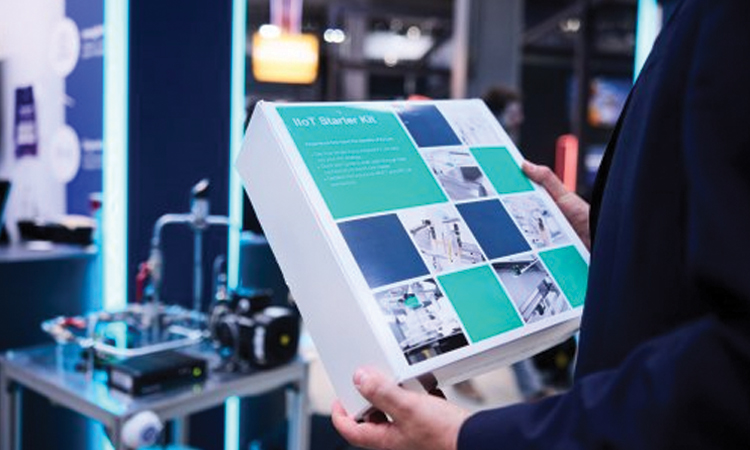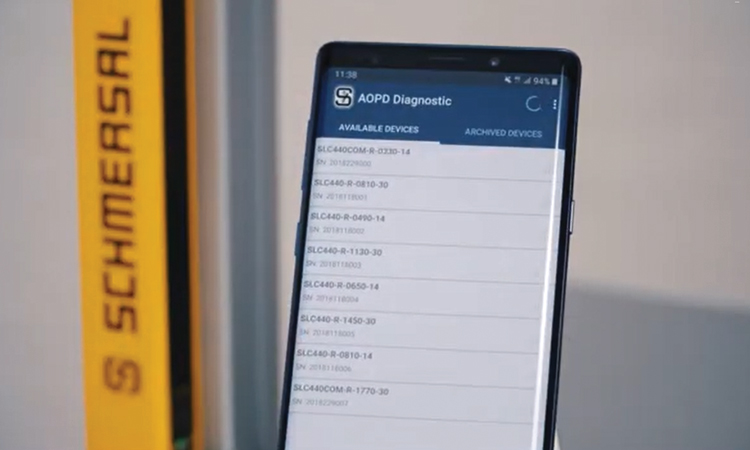The Industrial Internet of Things (IIoT) relies on comprehensive sensor and process…

Critical Manufacturing in Aerospace & Defense Industries | ENGINEERING REVIEW | Manufacturing | Industrial Sector Magazine & Portal | Indian Industrial Information | Manufacturing Industry Update | Manufacturing Technology Update
The aerospace and defense industries are among the most technologically demanding sectors, requiring extreme precision, innovation, and stringent quality standards. Manufacturing in these industries involves complex processes, cutting-edge materials, and state-of-the-art technologies to meet mission-critical requirements. From aircraft components to missile systems and defense vehicles, every part must adhere to strict safety, reliability, and performance criteria.
The Importance of Critical Manufacturing
Aerospace and defense manufacturing differs significantly from conventional production due to the high-risk applications of the products. Aircraft structures, jet engines, space exploration modules, satellites, unmanned aerial vehicles (UAVs), and military-grade weaponry require advanced manufacturing techniques to ensure durability and performance in harsh environments. The failure of a single component can have catastrophic consequences, making precision engineering a non-negotiable aspect.
Critical manufacturing involves several specialized processes, including advanced machining, additive manufacturing, composite fabrication, and high-precision assembly. These processes contribute to the development of lightweight, high-strength, and thermally stable components, essential for aerospace and defense applications.
Advanced Machining and Precision Engineering
One of the cornerstones of aerospace and defense manufacturing is high-precision machining. Aircraft engines, turbine blades, structural components, and missile casings demand extremely tight tolerances—often in the micrometer range. Computer Numerical Control (CNC) machining plays a crucial role in achieving such precision, allowing manufacturers to fabricate complex geometries with high repeatability.
Multi-axis machining centers, including 5-axis and even 9-axis CNC machines, enable the production of intricate parts with minimal material wastage. These machines allow simultaneous movement along multiple axes, facilitating efficient and accurate cutting of difficult-to-machine materials like titanium, Inconel, and high-strength aluminum alloys.
Moreover, advanced metrology techniques such as coordinate measuring machines (CMM), laser scanning, and digital twin technologies help ensure components meet exact specifications before deployment.
Additive Manufacturing and 3D Printing
Additive manufacturing (AM), or 3D printing, has emerged as a game-changer in aerospace and defense. Unlike traditional subtractive processes, AM builds parts layer by layer, enabling the creation of lightweight, complex structures that would be impossible or highly expensive to machine conventionally.
The use of metal AM in producing aerospace-grade parts has grown significantly, with materials like titanium, nickel superalloys, and stainless steel being widely used. Components such as fuel nozzles, turbine blades, and even structural elements of aircraft and satellites are now 3D printed to reduce lead times and enhance performance.
For defense applications, AM allows for rapid prototyping and on-demand production of spare parts, reducing logistical challenges in battlefield conditions. Military forces can 3D print mission-critical components directly on-site, minimizing downtime and ensuring operational readiness.
Composite Materials and Advanced Fabrication
Weight reduction is a primary objective in aerospace and defense manufacturing, as it directly impacts fuel efficiency, maneuverability, and overall performance. Traditional metal alloys, while strong, are often heavy, prompting the shift toward composite materials.
Carbon fiber-reinforced polymers (CFRPs), ceramic matrix composites (CMCs), and hybrid materials have become standard in aircraft fuselages, wings, and propulsion systems. These materials offer superior strength-to-weight ratios, corrosion resistance, and thermal stability, making them ideal for both commercial and military applications.
Manufacturing composite structures requires specialized techniques such as resin transfer molding (RTM), automated fiber placement (AFP), and out-of-autoclave curing processes. These methods ensure uniform strength distribution and structural integrity in critical aerospace components.
Smart Manufacturing and Industry 4.0
The integration of Industry 4.0 technologies has revolutionized aerospace and defense manufacturing. Smart factories equipped with IoT sensors, AI-driven analytics, and digital twins enable real-time monitoring of production processes, predictive maintenance, and enhanced quality control.
IoT devices embedded in machinery and equipment collect vast amounts of data, allowing manufacturers to detect anomalies before they result in costly failures. AI algorithms analyze production trends, optimizing efficiency and minimizing waste.
Digital twin technology—a virtual replica of physical assets—allows engineers to simulate and test aerospace components under various conditions before actual production. This reduces trial-and-error iterations, accelerating innovation and reducing costs.
Defense Manufacturing: Challenges and Innovations
The defense sector faces unique manufacturing challenges due to security concerns, compliance with military standards, and evolving threats. Unlike commercial manufacturing, defense production often involves classified technologies, restricted supply chains, and stringent government regulations.
One major challenge is the sourcing of critical raw materials. Many defense-grade materials, such as rare earth elements and specialty alloys, are subject to geopolitical supply constraints. This has led to increased efforts in developing domestic supply chains and exploring alternative materials.
Another critical aspect is cybersecurity in manufacturing. As defense industries rely more on digital technologies, protecting sensitive design data and production processes from cyber threats has become a priority. Secure manufacturing environments, encrypted communications, and blockchain-based traceability solutions help safeguard intellectual property.
The Role of Automation and Robotics
Automation and robotics are playing an increasing role in aerospace and defense manufacturing, particularly in precision assembly, welding, and inspection processes. Autonomous robots equipped with AI can handle repetitive and hazardous tasks, improving worker safety and reducing human error.
Collaborative robots (cobots) work alongside human operators in assembling complex components, ensuring consistency and efficiency. In aerospace production, robotic drilling and fastening systems are widely used to assemble fuselage sections with extreme precision.
Automated guided vehicles (AGVs) streamline logistics within manufacturing facilities, transporting heavy components efficiently while minimizing downtime.
Sustainable Manufacturing in Aerospace and Defense
Sustainability is becoming a key focus area for aerospace and defense industries. As environmental concerns grow, manufacturers are adopting greener production methods, such as sustainable machining practices, energy-efficient processes, and recycling of aerospace-grade materials.
Hybrid-electric propulsion systems, bio-based composites, and eco-friendly coatings are gaining traction as manufacturers strive to reduce their carbon footprint. Moreover, advancements in hydrogen-powered aircraft and electric vertical take-off and landing (eVTOL) systems signify a shift toward greener aviation technologies.
Future Trends and Outlook
The future of aerospace and defense manufacturing is being shaped by emerging technologies such as quantum computing, hypersonic materials, and space exploration advancements. As commercial space travel and deep-space missions gain momentum, the demand for cutting-edge manufacturing solutions will continue to rise.
Hypersonic weapon systems, autonomous drones, and AI-powered defense systems are redefining military capabilities, requiring manufacturers to innovate rapidly. The convergence of digital manufacturing, AI, and advanced materials will drive the next wave of breakthroughs in aerospace & defense.
In conclusion, critical manufacturing in aerospace and defense is a dynamic and high-stakes field where precision, innovation, and reliability are paramount. With the continuous evolution of technology and materials, the industry is poised to achieve new heights, ensuring safer, more efficient, and more sustainable aerospace and defense solutions.









